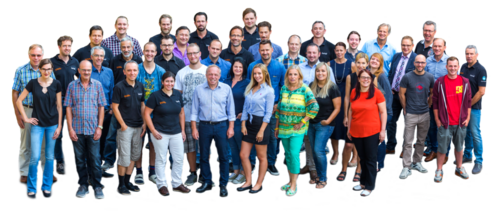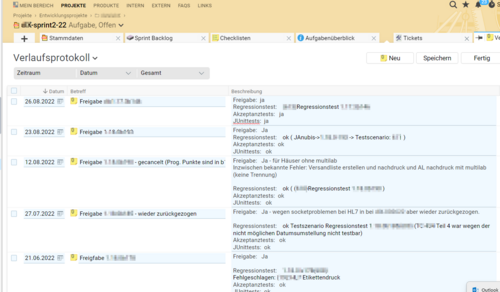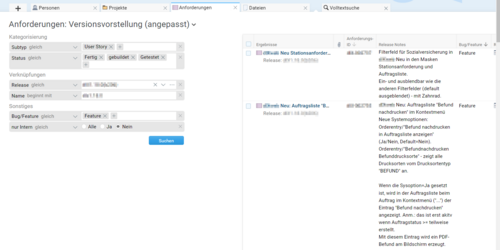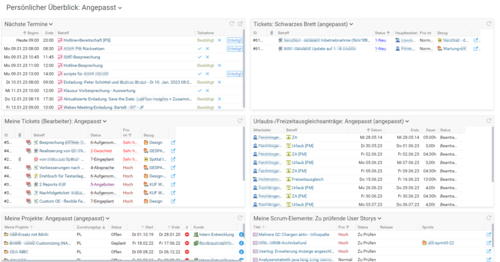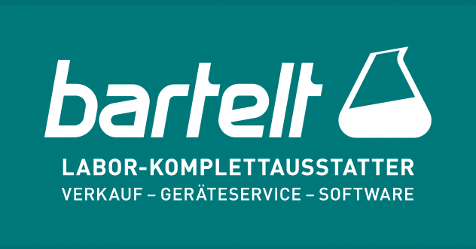Simply infinitely adaptable
Success story from BARTELT Gesellschaft m.b.H.
The decision to use Projektron BCS pays off every day, and Projektron GmbH's ongoing further development makes it a partner with a future.
Complete laboratory supplier from Austria
Bartelt is a professional full-service laboratory supplier based in Graz and offers a comprehensive range of services in the areas of laboratory equipment, furniture and chemicals, as well as software solutions for this sector.
The company's goal is to provide nationwide coverage for domestic laboratories and research institutions in the clinical and industrial sectors. The company consists of around 60 employees.
Projektron BCS is used in the company's software development department (ten employees). Here, the laboratory information system datalabX for clinical diagnostic laboratories has been developed, installed and maintained for more than 30 years.
New products are the web platforms chemXpert, a chemical management software, and the biobank smplXpert.
Here, due to the requirements of GAMP (good automated manufacturing practice) and for medical devices, complete documentation is of particular relevance. We develop according to the EN ISO 62304 standard and our quality management system is certified according to ISO 9001:2015.
Need for project management software
Originally, we used our own Microsoft Access solution for project time recording and product development.
Due to the constant need for adaptations in newer Access versions, we went in search of a solution that could map product development and project time recording as well as ticket management in one programme. This is how we finally came to Projektron GmbH and BCS.
Introduction to BCS via trial access and training
We were promptly provided with a test account and it became clear relatively quickly that we had in our hands an extremely customisable and ideal software for our purposes.
After project management and administrator training on site at our company, we were able to map our needs in BCS in the best possible way. The structure of the projects was one of the big questions in order not to have to do any general restructuring afterwards. Of course, we were helped by the fact that Projektron itself is also a software house and has the same requirements. So these questions could be clarified in the course of the training.
The separation into development projects with all the Scrum tasks and customer projects with the tasks and tickets for the orders made sense - it is still in operation today. The internal permanent tasks complete the structure in order to be able to efficiently book time on them.
Since we are embedded in the overall company and Microsoft Navision is used as the ERP system, the quotation and billing system is not an issue that could be covered with BCS. So we mainly have two parallel tracks: Programme development and the implementation of customer projects, which can also lead to development points.
BCS use in development
Development inputs are always made via tickets so that the origin is clarified. They are entered in different ways: A programme correction is triggered by customer tickets. Maintenance customers each have a standing task in the customer projects for the maintenance of the products. These standing tasks can be reached quickly by means of bookmarks.
Ideas or meeting minutes with resulting programming points are added to the respective development project via a standing task - also accessible via bookmarks.
A customer order also has a corresponding ticket for a task. Tickets after errors in the regression test are automatically inserted in a standing task in the development project via e-mail sender.
One or more user stories are created from the tickets. They are given the status "programming". The tickets are assigned to a sprint during sprint planning. Programming mainly uses the "Task Overview" view to see the planned and in-progress user stories.
In addition, the risk assessment was introduced for each programming point. The jump to the current sprint is also done via bookmarks.
The release of a programme version is written into the milestone that defines the version. In addition, the release is logged in the progress log of the sprint task. The ID of the user story is specified in our version management (Subversion) during check-in in order to have a complete trace.
BCS deployment in the area of customer projects
The client projects are set up in a minimalist way, as we do not consider workload due to the small number of employees in a project. The tasks are recorded in the necessary granularity for time recording as well as ticket creation. We create the release notes via the detailed search and a subsequent .csv export.
Used ERP functions of BCS
We create a monthly JobSheet. This is a report for overtime, accounted overtime and a representation of leave, compensatory time off (FZA) and sick leave or doctor's appointments. We also use the synchronisation of Microsoft Outlook appointments to have them in the dashboard.
At Bartelt, I am the programme manager, HR manager for my department and product owner. In the workspace "My area" in the view "Personal overview", it is especially important for me to handle the user stories that need to be checked, as well as the new tickets analogous to a noticeboard. Furthermore, I can easily process the holiday requests of my employees here.
Simply infinitely adaptable
I am glad that I chose BCS at that time, because it is constantly being developed further, the support works wonderfully and because it is simply so infinitely adaptable. At the same time, we have not yet used process modelling according to BPMN (Business Process Model and Notation).
We plan to get to know it in a workshop and use it to cleanly solve the status transitions between different types of objects, e.g. user stories and tickets.
